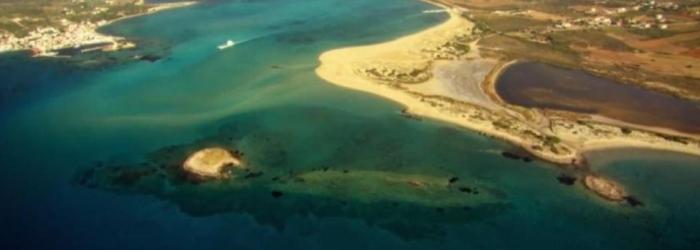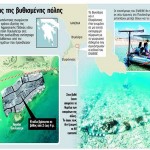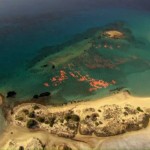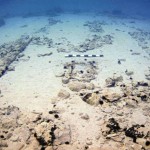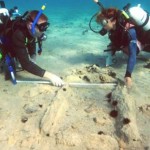PAVLOPETRI "A HIDDEN CITY"
A rare prehistoric city of the mainland residential project (buildings , streets , squares) , topografithike discovered by the Institute of Oceanography of Cambridge in 1968 ,in Paulopetri of Elafonisou. It 1967 the N.C FLEMMING the Institute of Oceanography discovered the sunken settlement dating from the Bronze Age to Paulopetri and the next year the group underwater exploration consisting of 7 States and under the direction of RC JONES mission was organized with the aim of exploring the site. Naturally Lafonisiotes especially the fishermen knew the existence of the sunken city and sometimes in their nets entangled various artifacts.
“THE UNDERSTANDING LOCATION OF THE SUPPLY CITY”
Seven hundred meters NE of Agios Spyridon of Elafonisou Paulopetri is the island from which it received the name of the whole area. This island is just 200 meters from the coast of Punta, one of the largest and most beautiful beaches in the southern Peloponnese. In the sea area enclosed between Paulopetri the opposite coast and the very small island located NE of the Paulopetri (across the canal and cemetery) is submerged prehistoric town Elafonisou. The bulk of the city is 200 meters SW of the islet which is opposite the coast of Punta depth 2-3 measures. Visible buildings covering an area 300 meters underwater for about 100 and start 50m from shore, while the original area of settlement was even greater because the dry sand meets , while in the opposite direction of the seabed increases sharply and the ruins are a mass of rubble. The sunken city, Bronze Age , located between two shallow hills, covered by many stones might be ruins of past fields and makes it difficult to distinguish the walls but who survived the series of foundation of buildings. The eastern edge of the settlement can not be decrypted because the depth of the water increases and the remains thin sand , while the western edge of the site seems genuine boundary of the settlement because beyond this sea is much deeper. The settlement probably stretched over ten hectares or at least two and more times than that survives today The ancient boundary of the settlement but should not exceed the current Paulopetri island because the sea there is much deeper.

